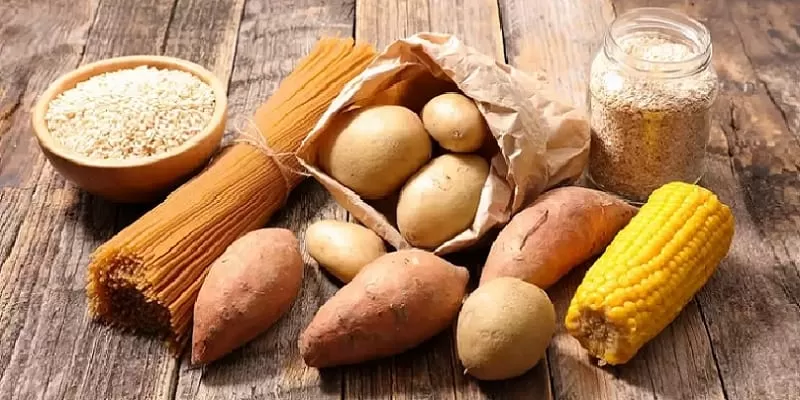
What is the difference between fast carbs and slow carbs?
Carbohydrates are a heterogeneous concept, since they are divided into two large groups, known to most as fast and slow, although there are also medical terms: “simple” and “complex”, respectively. What is the difference between them, and how do they affect the body? Our experts have found answers to all questions.
About carbohydrates and the glycemic index
First you need to understand what fast and slow carbohydrates are. Substances that come with food are polysaccharides (complex sugars — starch, glycogen) and monosaccharides (simple sugars — glucose, fructose).
Carbohydrates are important for both normal physical and full-fledged mental activity of a person. If you use them in excess, this is fraught with the appearance of fat reserves, and with insufficient intake of saccharides in the body, disruptions in metabolic processes occur.
Due to the difference in structure, simple and complex carbohydrates are digested differently, so experts made a link to the concept of «glycemic index». In simple terms, GI is a measure of the rate at which blood glucose rises after ingestion of saccharides. The higher this indicator, the faster the increase in glucose will be.
ON A NOTE. The amount of sugar contained in foods is not identical to the glycemic index. Some dried fruits, such as apricot and date, are equally sweet, while the GI of the former is much lower than the latter.
Comparison of simple and complex carbohydrates

Fast ones have a simple structure: they are represented by 1 (monosaccharides) or 2 (disaccharides) molecules. All without exception have a high GI — more than 70, very sweet and water-soluble. Simple saccharides are quickly broken down (this process begins already in the oral cavity) and are absorbed into the blood no less quickly.
Monosaccharides are able to significantly increase the level of glucose in a couple of minutes after entering the body, but after half an hour it decreases. Fast carbohydrates are suitable for restoring energy after significant physical exertion or a stressful situation.
ON A NOTE. You should not abuse simple carbohydrates, since the constant ingestion of this substance leads to an overload of the pancreas, the reserve of which, as you know, has its limit, and then it is almost impossible to restore its working capacity.
What are fast carbohydrates? These include:
-
Glucose is the basic form of saccharide that is always present in the human body and serves as a muscle and liver source of energy. Contained in carrots, grapes, oranges, berries, etc.;
-
Fructose — similar in action to glucose, but not absorbed so well. Contained in sweet varieties of fruits, vegetables, honey, etc.;
-
Galactose — found in large quantities in dairy and sour-milk products (cheese, cottage cheese, whey);
-
Sucrose — found in molasses, sugar (beetroot, brown, cane) and in small quantities — in vegetables / fruits;
-
Lactose — is of animal origin, plays an important role in the proper nutrition of all body systems (contained in milk);
-
Maltose is formed during the fermentation of grapes. Contained in baby food, oranges, beer.
Slow (complex) carbohydrates are represented by a large number of molecules. They have a low GI (no more than 40). They break down much longer than fast ones and are actually absorbed in the intestines. They provide a long and continuous process of glucose entering the blood. It is slow carbohydrates that give a feeling of fullness, provide emotional stability.
ON A NOTE. Complex saccharides allow you to reduce the number of calories consumed. Thus, they help to effectively fight excess weight without losing significant energy reserves.
What are slow carbohydrates? These include:
-
Starch — splitting in the digestive tract into enzymes, it is converted into glucose. Found in legumes, grains, potatoes.
-
Glycogen — when broken down in the liver, it is also converted into glucose. Contained in the liver of animals, cells of marine life (in particular, crabs and crayfish);
-
Fiber — practically not absorbed by the body, but at the same time it helps to normalize peristalsis, cleanse the intestines of toxins, and also stimulates the outflow of bile. Contained in vegetables, fruits, cereals (in small quantities);
-
Insulin is a polysaccharide — a fructose residue. Found in artichokes and chicory;
-
Pectin and its compounds — found in large quantities in fruits (usually still unripe).
How to use carbohydrates for good
Since carbohydrates are the main source of energy, the body cannot do without them. But this does not mean that for the normal functioning of the systems it is necessary to eat everything in a row. Not all saccharides provide the same benefits. The emphasis should be on a number of products rich not only in saccharides, but also in other nutrients, valuable fibers. These are cereals, vegetables and fruits.
You should not introduce a large amount of sweets and bakery products into the diet, since this is an excess of fast carbohydrates that sharply increase and just as sharply lower glucose levels, which gives a sudden feeling of hunger after a short period of time.
But slow carbohydrates can be introduced into the diet in larger quantities: they will give a long feeling of satiety and provide the body with energy.
Summary
It’s safe to say that fast and slow carbohydrates have significant differences.
|
|
|
|
|
|
From 70
|
Up to 40
|
|
|
Monosaccharide (1-2 molecules)
|
Polysaccharide (from 3 to several thousand)
|
|
|
2-3 minutes
|
Few hours
|
|
|
30-40 minutes
|
Few hours
|
|
|
Minor
|
Significant
|
Добавить комментарий
Для отправки комментария вам необходимо авторизоваться.